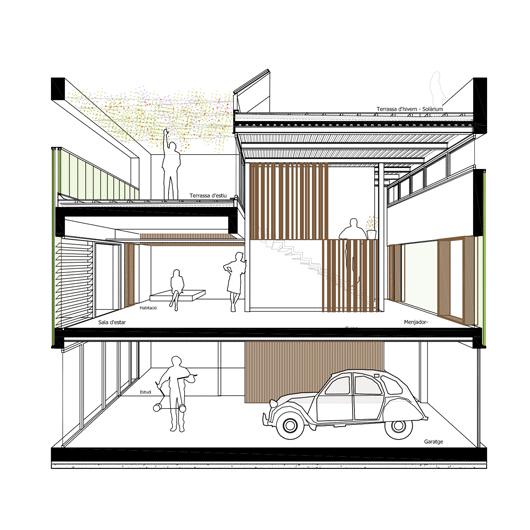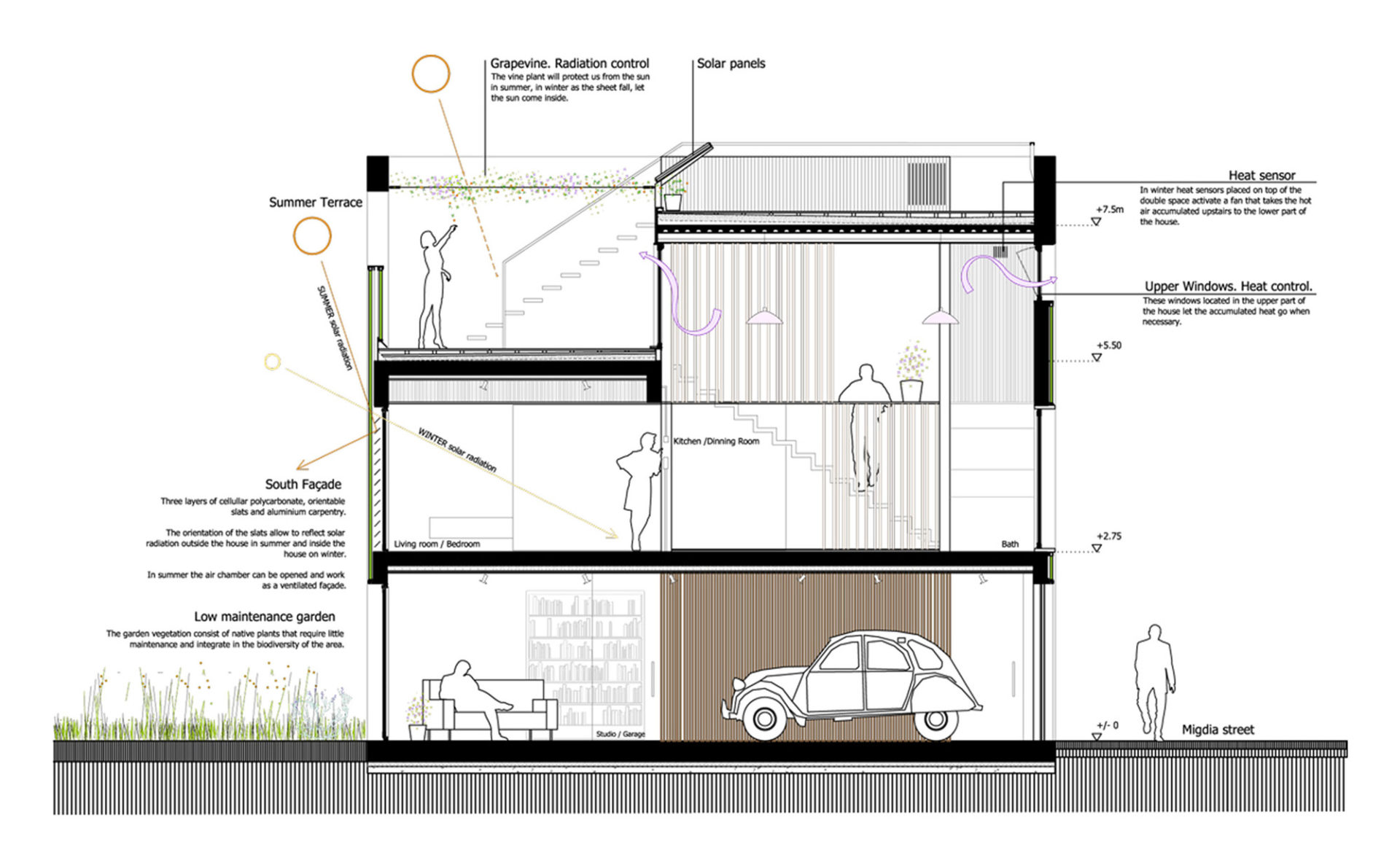Sketched out by a team of architects from Sau Taller d’Arquitectura, House Carrer Migdia is located in Granollers, Barcelona, Spain, and it ensures 1,862 square feet of living space. Respecting the client’s preferences, the architects created a home that is flooded with natural light and can be expanded at a later date should the need arise.
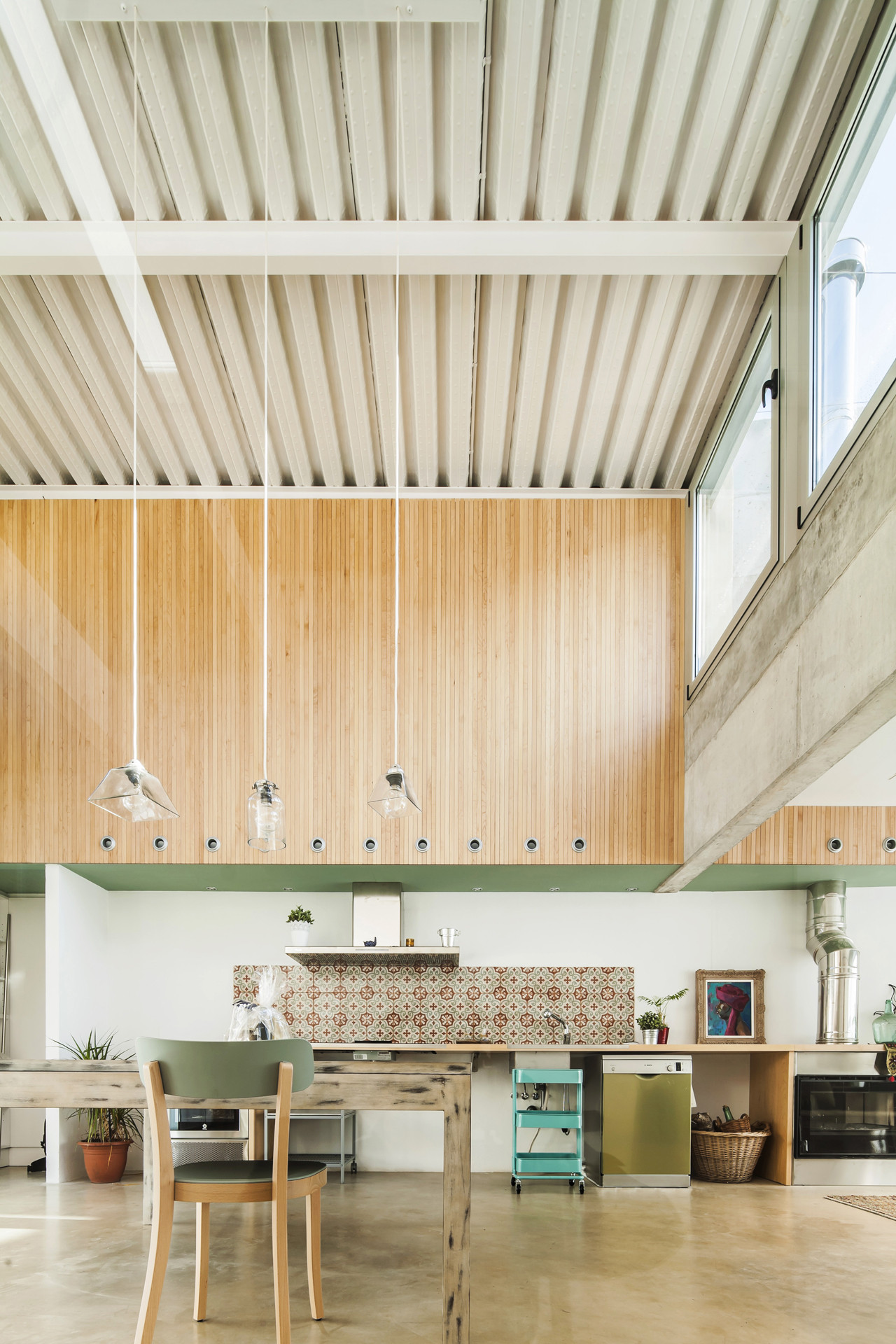
The ground floor incorporates a multifunctional garage that is linked to a courtyard and to the street. Consequently, it can be used to enjoy social, courtyard-related activities or intimate family meals. The first floor comprises the dining area as well as a fully equipped kitchen, while the bedroom is connected to a living area due to a double sliding door. The roof level includes a pair of terraces, one of which is more private and boasts a vegetal pergola, while the other takes on the role of a solarium.
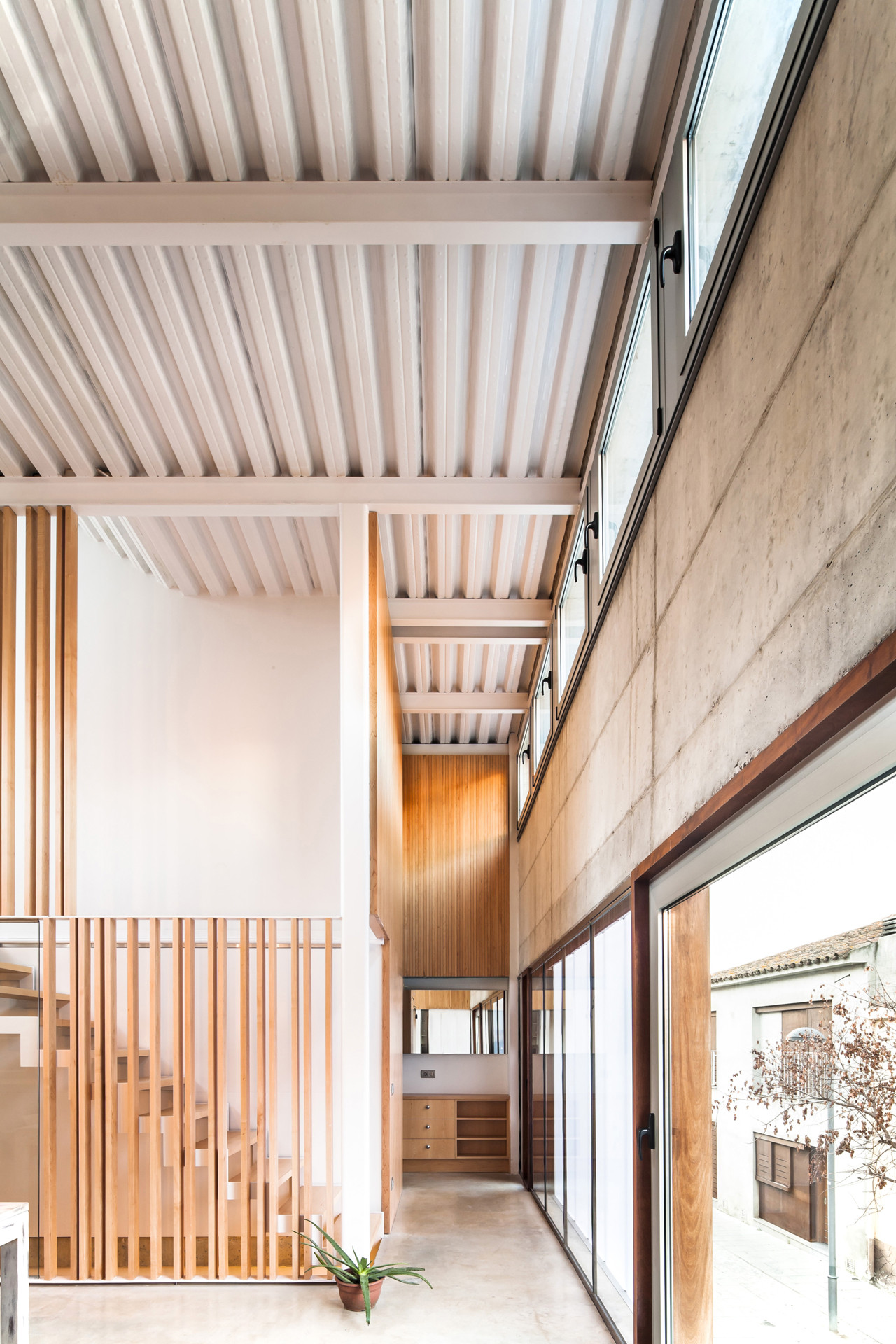
House Carrer Migdia features two facades that regulate the flow of natural light within the living spaces thus making sure that temperature levels always remain comfortable. The outer skin was made using 1.5-inch thick cellular polycarbonate and the inner one was created using double glass. The space between the two layers is occupied by operable aluminum louvres.
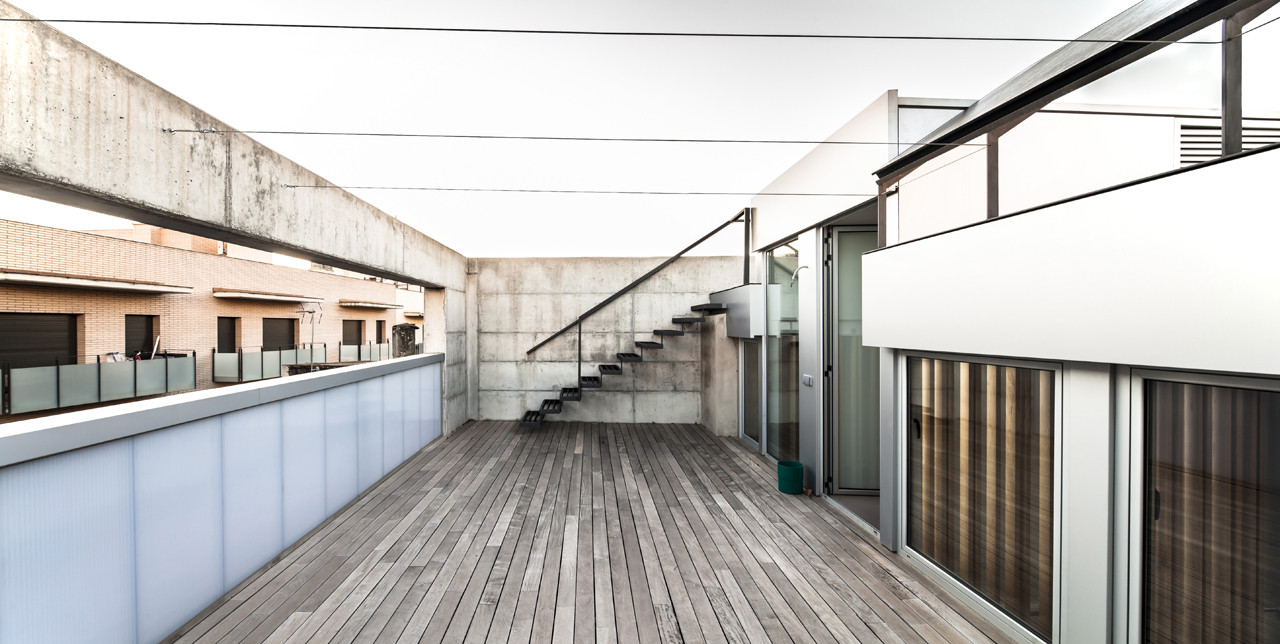
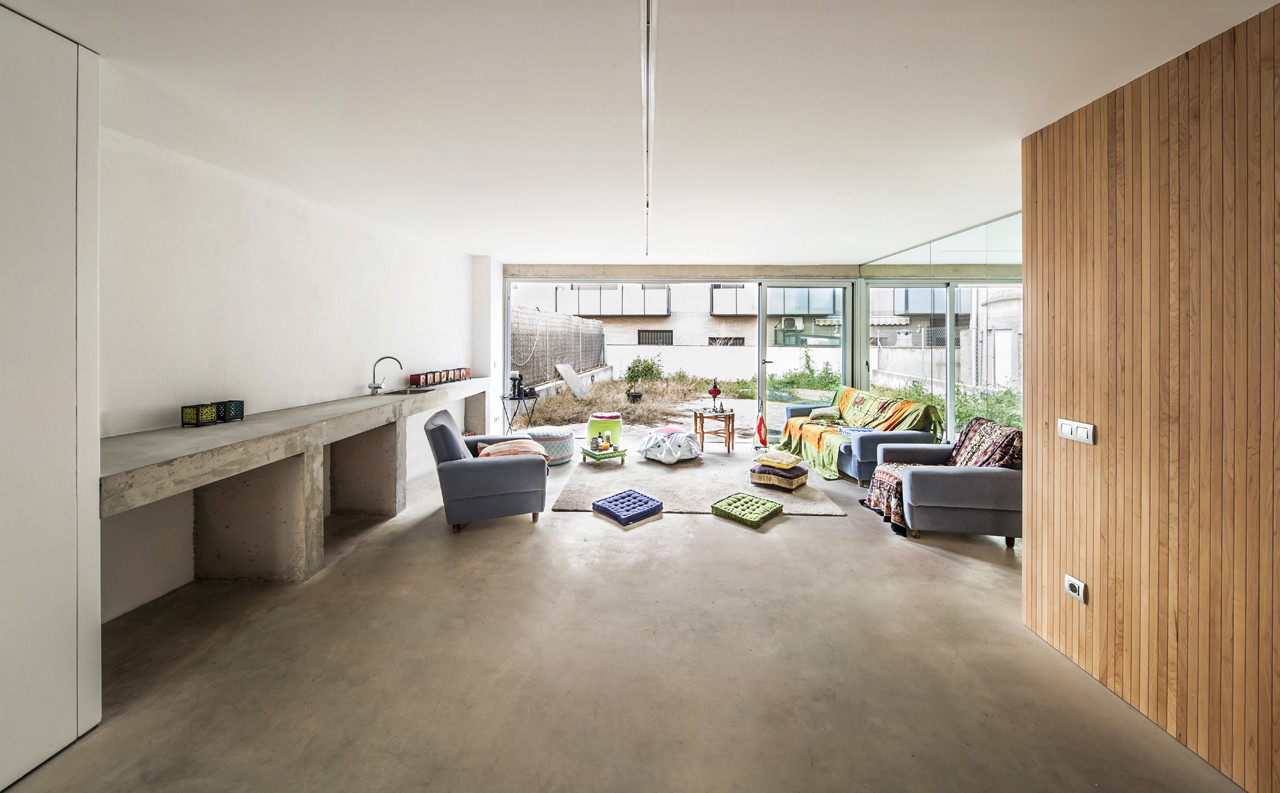
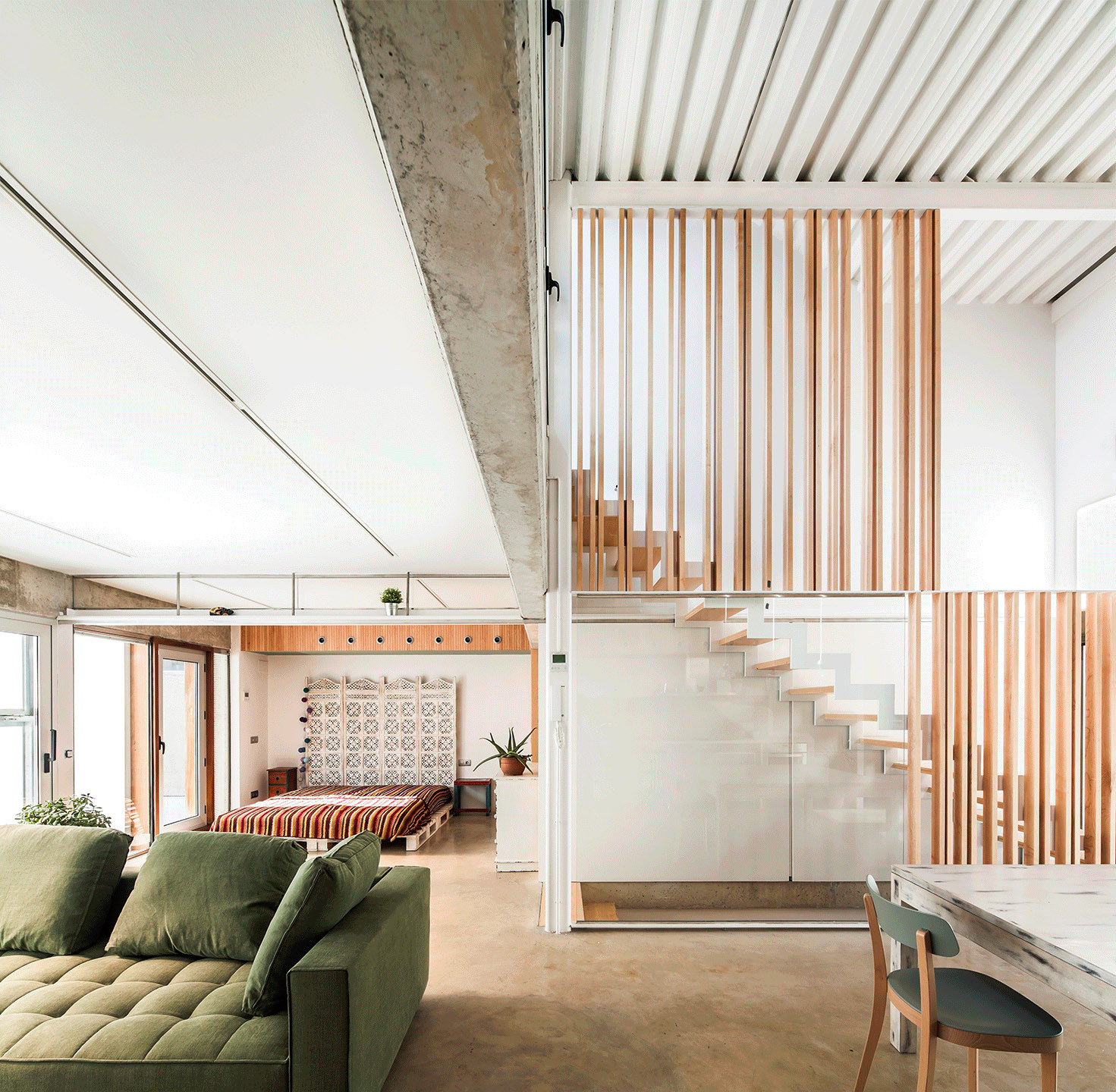
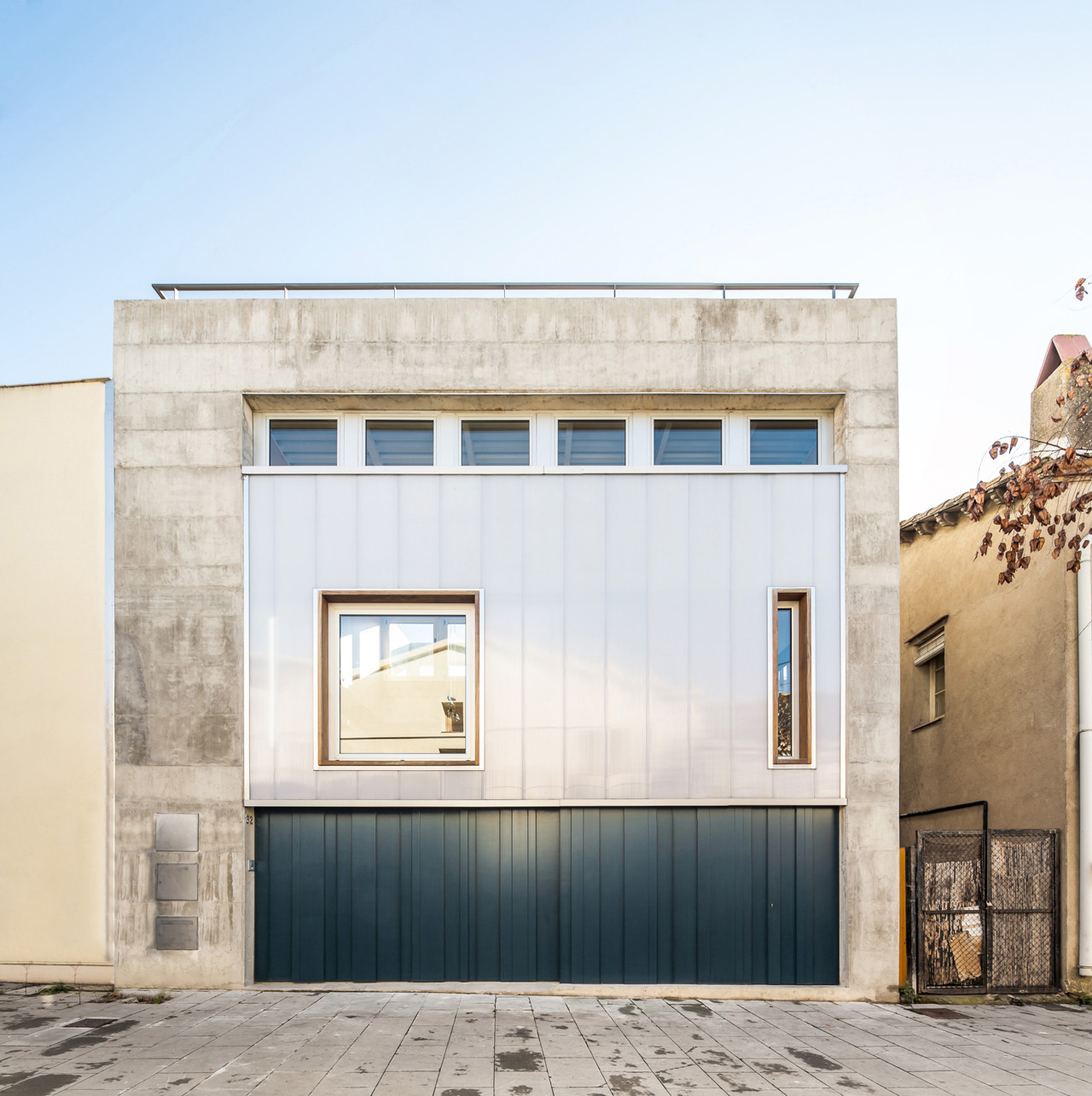
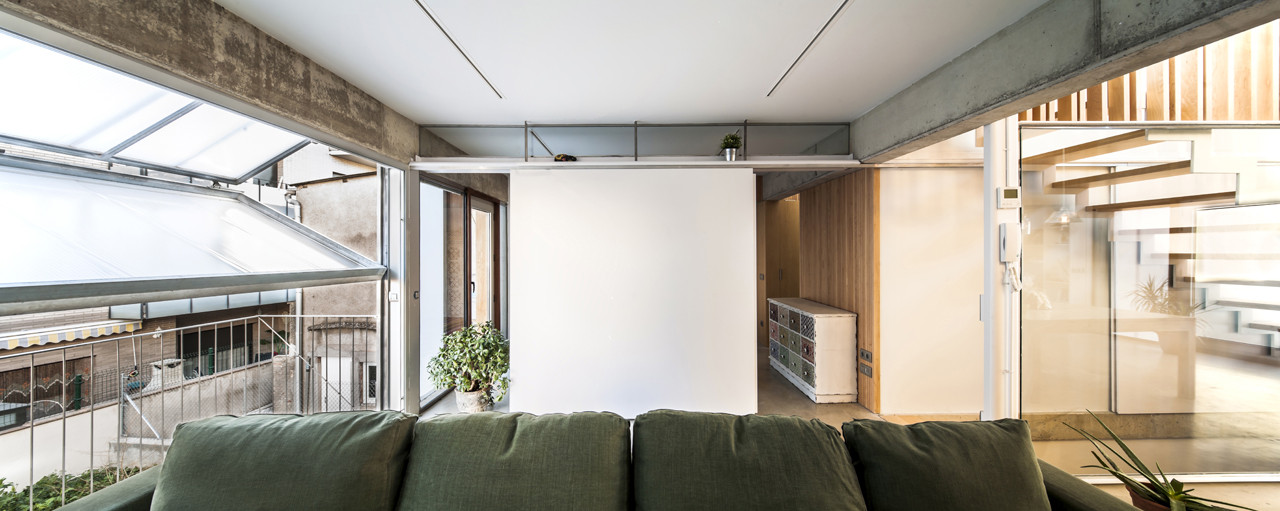
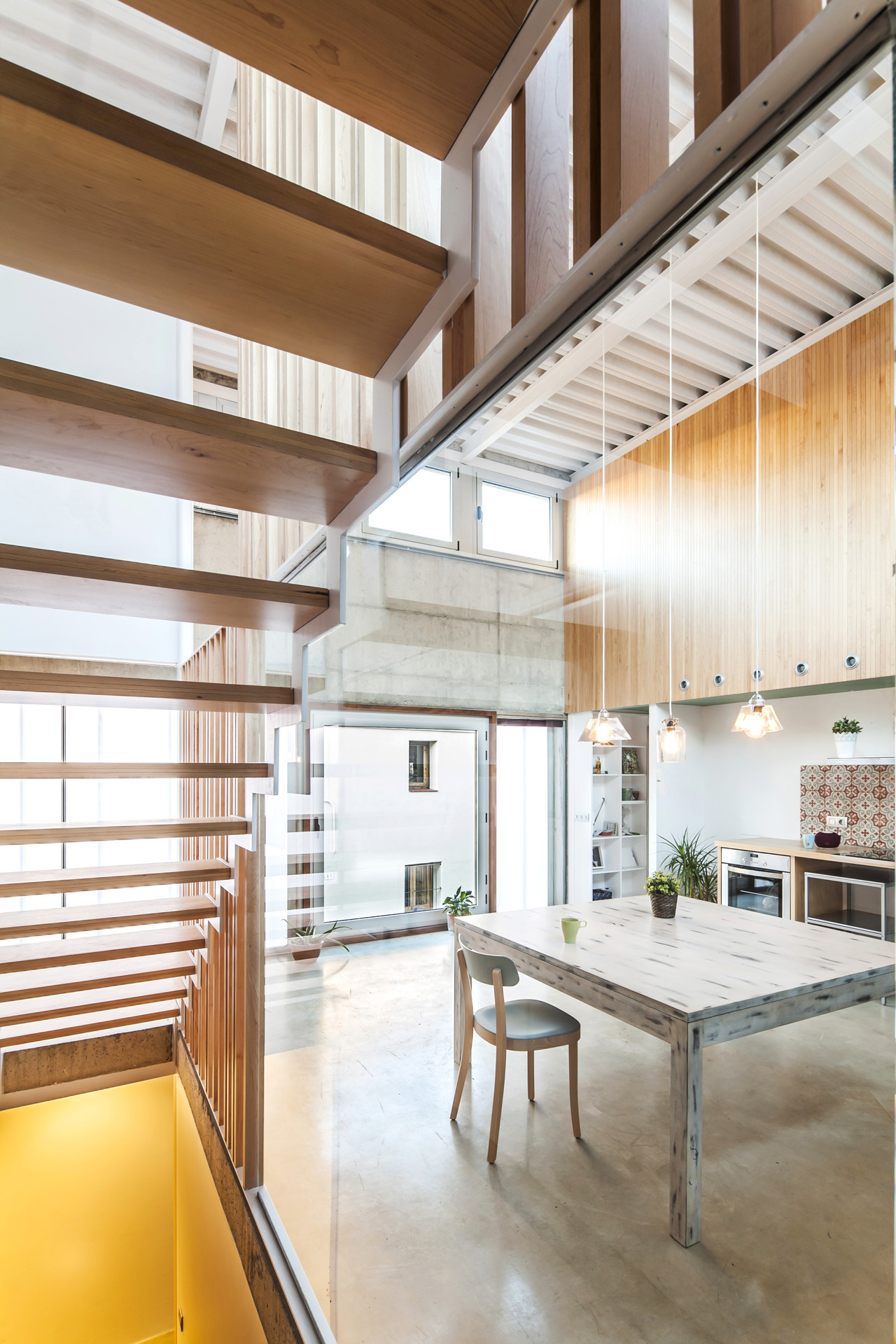
From the architect:
The project starts from two client’s requirements:
A house with plenty of natural light.
A house with the possibility of increasing in size through the years.
To comply with those requirements SAU Taller de Arquitectura proposes a clear action: to bring services and storage areas to the blank walls leaving a central core which articulates the space around it. With this decision we get the street and courtyard façades free of program. Those façades are facing north and south so they can become a light and ventilation filters. Another consequence of this decision is getting a free and flexible section which will aloud future light slabs to be built if the inhabitants need them. With this aim, concealed anchorages where left into the concrete to aloud simple timber structure to be built in the future.
A multifunctional garage space is located at ground floor level, related to both, street and courtyard, is a space to have familiar meals or courtyard related activities. Facing south at first floor level we find the dinner area, next to it, and facing north we find the kitchen. The bedroom is linked to the living area through a double sliding door that gives different levels of privacy. At roof level and thanks to the section flexibility we find two terraces, the first one, protected with a vegetal pergola is more private, the second is an open one and works as a solarium.
The two side concrete walls are not perpendicular to the main façade, so in order to organize the plan the remaining spaces are used as a service and storage areas.
Integrated with the core we find the bathroom, and slightly moved to the north-east corner we have the stairs, this layout defines spaces with different proportions around the program which improves the relation between them. A small internal patio is located in the core to illuminate the central areas and the bathroom, in the future can contain the lift.
The two main façades had been thought as a triple skin. They act as a filter to improve internal light, temperature and comfort conditions. The outer skin is made of 4cm cellular polycarbonate and the inner one is made of double glass, movable aluminium louvres are located between those two layers. Facing south, we have the possibility to open or close the chamber between the polycarbonate and the glass depending on ventilation requirements: during winter time this chamber will remain closed and louvres will be orientated towards the interior to get more radiation, during summer time the chamber will remain opened and louvres will face exterior, that way we stop direct radiation exposure. If needed, is also possible to totally open the inner glass layer to ventilate the whole space from south to north. The house is been designed to get the best comfort using passive techniques. We only use 3 climate mechanical elements: one ventilated hearth, a fan system, and a thermostat with ducts that brings the worm air accumulated in the higher areas of the double height down to the lower levels and a heat pump as an additional support.
We have worked with neutral and rough materials: concrete, glass, polycarbonate, maple timber… trying to create a non contaminated space which allows the inhabitants to bring their own colour and personality with the chosen furniture, vegetation, paints, lamps, racks… in a way we are trying to project a daily life support.
Architects: Sau Taller d’Arquitectura
Location: Granollers, Barcelona,Spain
Area: 0 sqm
Project Year: 2013
Photographs: Andres Flajszer
Technical Architects: Claudia Galicia
Closings: Josep Arisa
Contractor: Art i Construcció SL
Client: Familia Iñigo Soley
Budget: 000.-€
